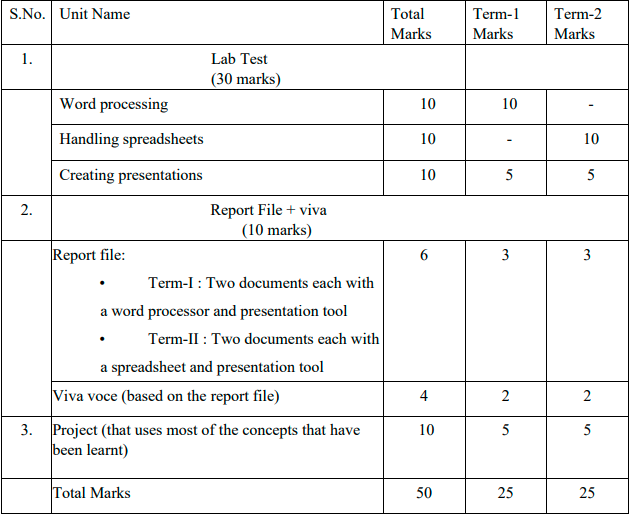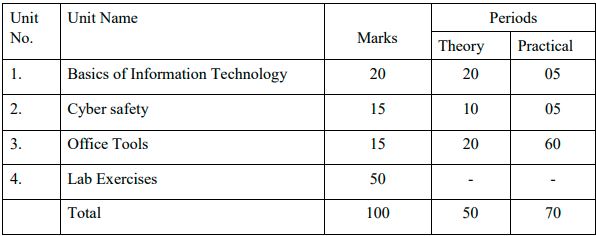CBSE Revised Syllabus for Class 9th Computer Applications Term 2 Exam 2022 is provided here for download in PDF. The CBSE Class 9th Computer Applications Term 2 Syllabus mentions structure of theory and practical examinations for Term 2. Students must go through the complete syllabus and prepare for their Term 2 Exam 2022 according to the course content given in the syllabus.
CBSE Class 9 Computer Applications (Code - 165) Syllabus 2021-22 for Term 2
Learning Outcomes
1. Ability to familiarise with basics of computers.
2. Ability to navigate the file system.
3. Ability to create and edit documents, spread sheets, and presentations.
4. Ability to perform basic data manipulation using spread sheets and use Indian languages in documents.
5. Ability to send and receive emails, follow email etiquette, and communicate over the internet.
6. Ability to create and upload videos.
7. Ability to safely and correctly use websites, social networks, chat sites, and email.
CBSE Class 9 Term 2 Syllabus 2021-22 (All Subjects)
Distribution of Marks and Periods - Term 1 + Term 2
Term 2
Unit 1: Basics of Information Technology
- Computer Systems: characteristics of a computer, components of a computer system – CPU, memory, storage devices and I/O devices
- Memory: primary (RAM and ROM) and secondary memory
- Storage devices: hard disk, CD ROM, DVD, pen/flash drive, memory stick
- I/O devices: keyboard, mouse, monitor, printer, scanner, web camera
- Types of software: system software (operating system, device drivers), application software including mobile applications
- Computer networking: Type of networks: PAN, LAN, MAN, WAN, wired/wireless communication, Wi-Fi, Bluetooth, cloud computers (private/public)
- Multimedia: images, audio, video, animation
- Include existing images/ pictures in a presentation.
- Animate pictures and text with sound effects in a presentation
- Create a simple spreadsheet and perform the following operations: min, max, sum, and average.
- Create different types of charts using a spreadsheet: line, bar, area and pie.
Unit 3: Office Tools – II
Presentation tool
- Edit and format a slide: add titles, subtitles, text, background, and watermark, headers and footers, and slide numbers.
- Insert pictures from files, create animations, add sound effects, and rehearse timings. Spreadsheets • Spreadsheets: concept of a worksheet and a workbook, create and save a worksheet.
- Working with a spreadsheet: enter numbers, text, date/time, series using auto fill; edit and format a worksheet including changing the colour, size, font, alignment of text; insert and delete cells, rows and columns. Enter a formula using the operators (+,-,*, /), refer to cells, and print a worksheet.
- Use simple statistical functions: SUM (), AVERAGE (), MAX (), MIN (), IF () (without compound statements); embed charts of various types: line, pie, scatter, bar and area in a worksheet.
Suggested Lab Exercises
- Browser settings for a secure connection
- Working with the operating system: Navigation of the file system using a mouse and keyboard.
- Word processing: create a text document; create a letter, report, and greeting card.
- Create a text document with figures in it. It should describe a concept taught in another course.
- Discuss the following in a text document about the basic organisation of a computer: CPU, memory, input/output devices, hard disk.
- Create a text document in an Indian language other than English.
- Create a presentation.
- Create a presentation with animation.
Breakup of marks for the Practicals:

| Download CBSE Class 9 Computer Applications Term 2 Syllabus 2021-22 (PDF) |
Also Check:


Comments
All Comments (0)
Join the conversation